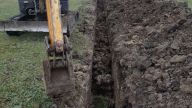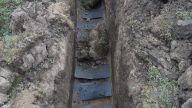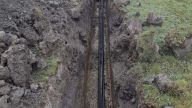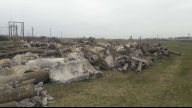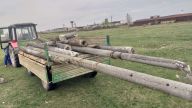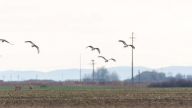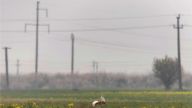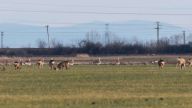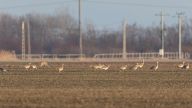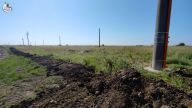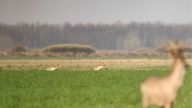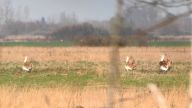The rehabilitation of the reed lake, a swamp that had become eutrophicated in the Culișer meadow, located in Salonta, Bihor county, has been carried out in the past 3 years within our project based on cross-border public-private partnership.
Pioneering conservation measures in Romania applied in Salonta, Romania, for Great Bustards

18 June 2022
Overhead power lines to us, humans, are a symbol of necessary infrastructure. But for the globally threatened Great Bustard, collisions with power lines can be fatal.
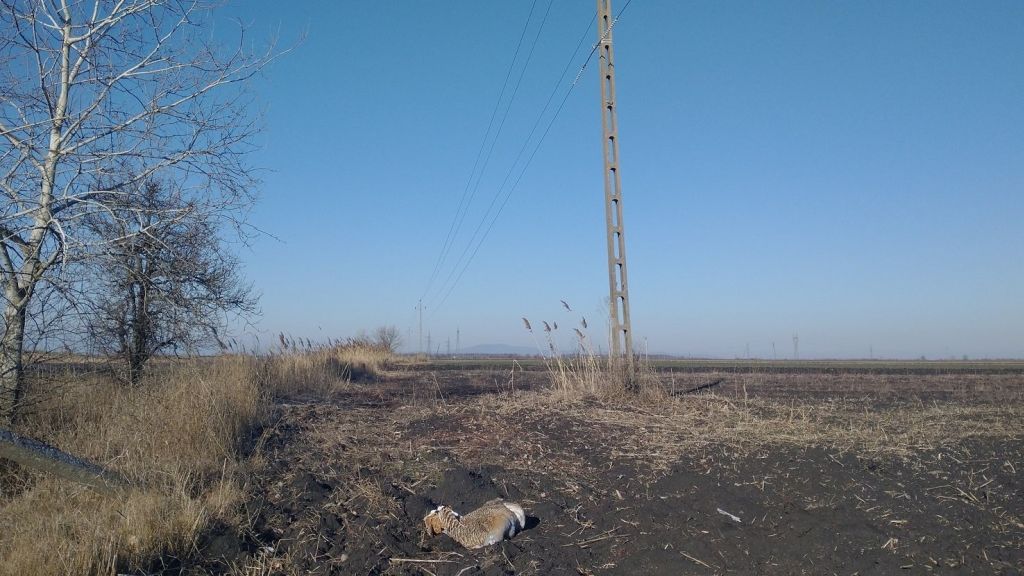
According to the International single species action plan for the Western Palearctic population of Great Bustard, it is necessary to take conservation measures to protect the fragmented Great Bustard populations. Collision with overhead power lines (OPL) is one of the biggest threats to this vulnerable species, and the most effective way to protect them is to bury the sections of power lines that pose the greatest danger to the birds.
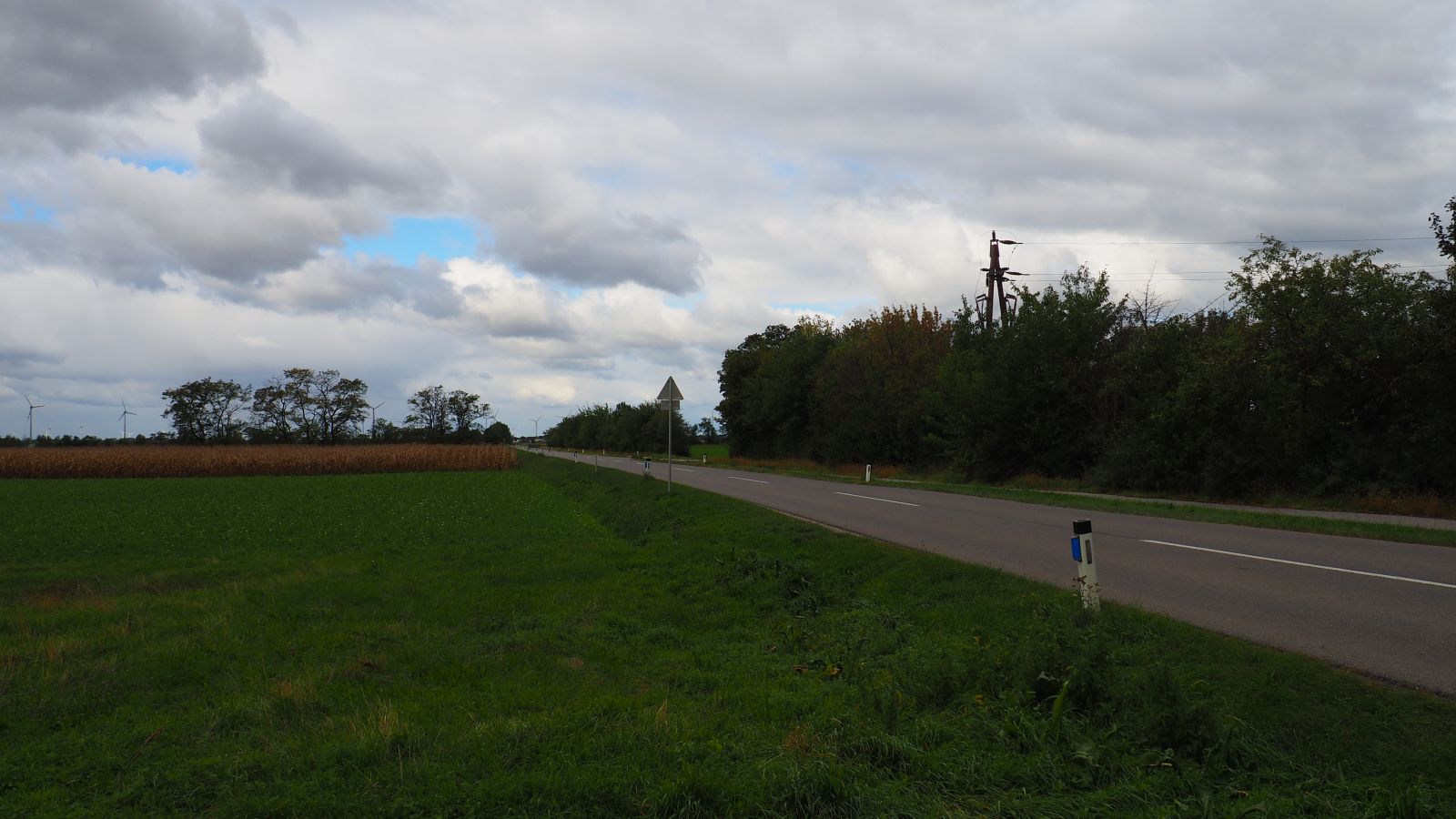
Such actions can only be achieved through collaboration between conservation specialists, public authorities and power companies, and they are mostly funded by European grants. Experts have published several studies, and there are already promising results in Austria, Germany, Hungary and Spain.
Why are collisions with OPLs a threat to Great Bustards?
The Great Bustard is the heaviest flying bird in Europe. The male, larger than the female, can weigh up to 20 kg, and the wingspan can measure 2.5 metres. As a steppe bird, it needs large territories to feed, breed and winter.
.png) Did you know?
Did you know?The Great Bustard may reach a speed of 80km/h in flight, exceeding that of an eagle such as the White-tailed Eagle, whose top speed is 70km/h. However, the weight difference between the two species is quite remarkable. The female Great Bustard weighs twice as much, whereas the male three times as much as the raptor. Therefore, it's much more difficult for them to execute manoeuvres to avoid obstacles, such as overhead power lines (OPLs).
During the cold season, when food is scarce, bustards may travel long distances between feeding and resting sites, and there's also a higher frequency of flights at height. Furthermore, harsh weather conditions (fog, sleet, snow) creating poor visibility may also increase collision risk significantly.
How can we protect the bustards from collisions in Salonta?
As the outskirts of Salonta are home to the only viable Great Bustard population in Romania, it empowered the City Hall of Salonta to take on this large-scale conservation measure, which is yet a pioneering action in our country. A 6 km long medium voltage OPL stretching in the habitat of these bustards was moved underground. In May 2021, utility cables were installed and the connection to the power grid was set. Then, in 2022 the electric poles were dismantled.
The total cost of the operation was 284,116 EUR, being carried out within our project, "Conservation, protection and promotion of natural values in the Salonta - Békéscsaba cross-border area, ROHU-14 - The Nature Corner", financed by the European Union through the European Regional Development Fund, with the support of the Governments of Romania and Hungary, through the Interreg V-A Romania-Hungary Programme.
"We believe it is important to take concrete and progressively active steps to protect the environment, not just issuing statements of such an attitude. As the threats to this population living in the area of Salonta have been identified, we considered it necessary to take as many measures as possible to protect the bustards. We aimed to offer them a less aggressive environment, to expand their habitat and, hopefully, contribute to their natural increase in number. It was time to put words into action!" stated Patricia Ivanciuc, project coordinator.
Nagy Attila, an ornithologist at Milvus Transilvania Vest, added: "This is a vital measure for this small and valuable population. Not only does it protect the bustards, but it also extends their territory as OPLs have a barrier effect on this species. At the same time, it also protects other birds, such as storks and raptors, which risk being electrocuted if they land on medium-voltage power poles."

What is the difference between bird collision and electrocution?
There are several bird species that get electrocuted on medium voltage OPL poles, but it does not affect the Great Bustard. Electrocution impacts large and small birds alike. But how? Many birds use electricity poles as a place for lookout/hunt - European Roller, Saker Falcon, Short-toed Snake-Eagle, to give just a few examples - but also as a resting place during migration (White Stork).
The solution, in this case, is to identify which are the most dangerous sections and to insulate the electric poles or change the upper part to a bird-friendly design, but also install nest supports for storks on top of power poles.
[Our press release is available in Romanian and Hungarian]
- Text: Laura Turdean | Consulting specialist: Nagy Attila / “Milvus Group” Association
- Cover photo: Great Bustard killed by collision with an OPL in Hungary. © Bükk National Park Directorate, Hungary


